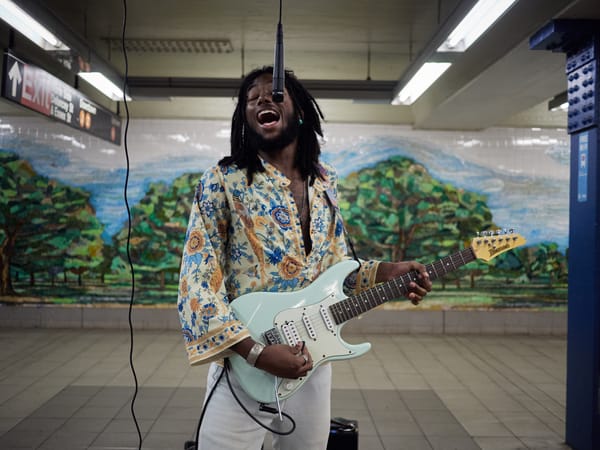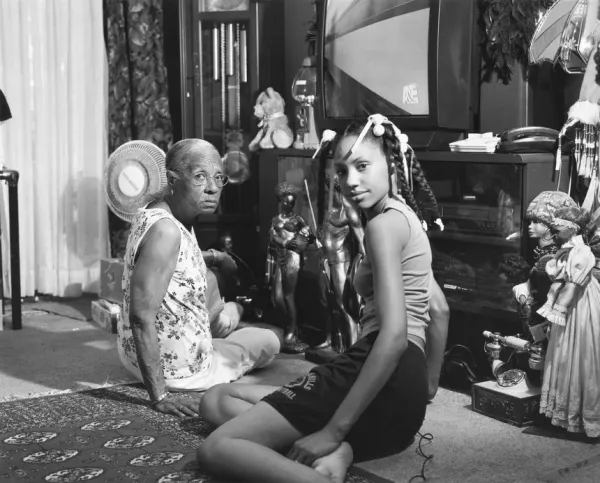Shifting the Gaze with Misan Harriman

Photography as Witness, Protest, and Power
Some photographers make you look. Others make you see. Misan Harriman belongs in the second group.
His images don’t just document moments, they amplify them. His work captures not only what is happening, but what it means. Through protest portraits, magazine covers, and global campaigns, Harriman has become one of the most recognisable Black British photographers working today. But what makes his perspective powerful is not just scale. It’s purpose.
This blog post explores how Harriman uses photography as a tool for witness, activism, and representation. It looks at how he shifts the gaze away from spectacle and towards dignity. And it considers how his work challenges old systems by telling stories from within.
Introducing Misan Harriman
Misan Harriman is a Nigerian-British photographer, publisher, and social activist. He came to photography later in life, picking up a camera for the first time in his late thirties. But his impact has been rapid and profound.
Harriman is self-taught. He began by photographing people in public spaces around London — creatives, protestors, strangers. His work soon gained attention for its clarity and emotional depth. In 2020, he became the first Black male photographer to shoot the cover of British Vogue in the magazine’s history. The image featured activist Adwoa Aboah and celebrated frontline workers.
Since then, his portraits and documentary work have appeared across major platforms, including CNN, The Guardian, and Vanity Fair. But Harriman’s approach remains consistent. His images are rooted in truth. They seek out stories that are often overlooked, then give them the spotlight they deserve.
Witnessing Through the Lens
Harriman’s photography often intersects with history. During the Black Lives Matter protests of 2020, he became one of the most widely published visual chroniclers of the movement in the UK. His portraits of protestors are powerful not because they show conflict, but because they show humanity — the quiet strength, pain, and hope carried on individual faces.
He describes his role as that of a witness. Someone who sees what is happening and responds with care and responsibility. His camera is not neutral. It stands with the subject. It asks the viewer to consider the person in the frame as fully human.
This commitment to bearing witness extends to his work beyond protests. Whether photographing public figures or ordinary people, Harriman brings a sense of presence and integrity to each portrait. He centres their agency. He allows them to be seen without distortion or demand.
Practising the Black Gaze
The Black gaze is a form of visual authorship. It describes the act of seeing Black life through Black eyes , shaped by cultural memory, self-knowledge, and lived experience. Harriman’s work exemplifies this perspective.
His photography challenges traditional media narratives, which often frame Black people through trauma or tokenism. Instead, Harriman focuses on resilience, connection, and dignity. He is deeply aware of the power dynamics involved in image-making. That awareness informs every frame.
He also practices the Black gaze through collaboration. Harriman listens. He researches. He engages. His portraits feel like conversations rather than transactions. This respect is evident in the way his subjects look back at the camera, with strength, with confidence, with full awareness of how they are being seen.
In doing so, Harriman offers more than representation. He offers reflection. He helps people see themselves in new ways, and invites others to see with greater care.
Lessons from Misan Harriman’s Practice
Harriman’s approach provides guidance for artists, storytellers, and changemakers alike:
- Use your platform with purpose. Harriman’s work reminds us that visibility can be a form of advocacy.
- Stay present. His strongest images come from paying close attention to the world around him.
- Let people speak through the image. His portraits are not just of people, they are with people.
- Document history as it unfolds. Photography can help shape public memory.
- Don’t wait to start. Harriman’s late entry into photography shows that it’s never too late to begin.
Expanding the Lens
Misan Harriman is part of a vibrant community of Black British photographers who are reshaping how stories are told. Each brings a unique focus, from the personal to the political, the everyday to the iconic.
His work alongside creatives like:
- Adama Jalloh, who captures the beauty of everyday Black British life through thoughtful black and white portraiture
- Ronan McKenzie, whose multidisciplinary approach blends photography, styling, and space-making to tell grounded, personal stories
- Karis Beaumont, whose vivid imagery celebrates culture, style, and identity across the diaspora
Together, these artists are not just shifting the gaze. They are expanding it. They are showing that representation is not a trend, it is a responsibility.
Conclusion
Misan Harriman’s photography stands at the intersection of art and action. His images hold emotion, clarity, and intention. They reflect the complexity of the moment while pointing toward something deeper, shared humanity.
By choosing to witness with care, Harriman shows that the Black gaze is not about exclusion. It is about truth. It is about taking control of the narrative, so that stories are no longer told about people, but with them.
His work invites us to see differently. To look not just at what is visible, but at what is real. And in doing so, to take our place in the ongoing work of telling better stories, ones rooted in justice, presence, and possibility.
Add your voice
Through The Black Gaze, we don’t just reflect the world, we reshape it. Your story matters. Share it. Honour it. Hold space for others. This is where truth lives and vision leads.
We invite Black photographers to contribute in two meaningful ways through story and image.






